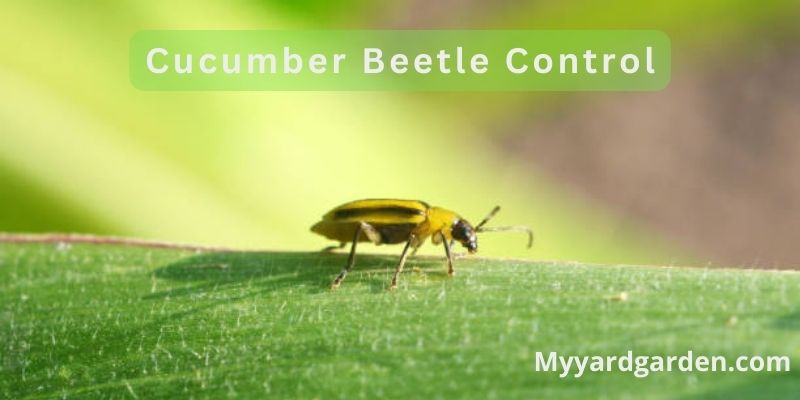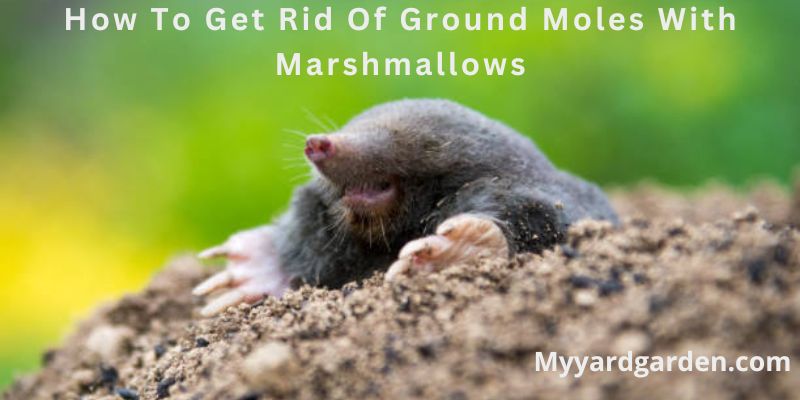Cucumber beetles are an unwelcome sight in gardens. They feed on cucumbers and other cucurbit crops, causing significant damage to plants.
Fortunately, there are various ways to control these pests to protect your garden and keep your plants healthy.
Cucumber Beetle Control
There are a variety of methods that can be used to manage cucumber beetle populations effectively. These can be grouped into two main categories: cultural and chemical control.
Cultural Control
Cultural control involves practices that reduce the number of cucumber beetles in the garden without using insecticides.
Examples of cultural controls include crop rotation, selection of resistant varieties, and physical exclusion strategies such as row covers or screens.
Crop Rotation
Crop rotation is an integral part of pest management. Cucumber beetles are particularly susceptible to crop rotation, as it helps break the life cycle of the pests.
By rotating cucurbit crops such as cucumbers, pumpkins, and squash with non-host plants (such as tomatoes or beans), you can reduce the populations of cucumber beetles in your garden.
Selection Of Varieties Resistant To Cucumber Beetles
Some varieties of cucurbits have been bred to be more resistant to cucumber beetle attacks. Planting these varieties can reduce damage from these pests and make managing them more accessible.
Physical Exclusion Strategies
Row covers or screens can physically exclude cucumber beetles from plants. These devices are placed over the plants and held with stakes or hoops, forming a barrier that prevents cucumber beetles from reaching the plants.
Chemical Control
Chemical control involves using insecticides to kill adult and larval cucumber beetles. This can effectively reduce populations, but it is important to note that proper timing and frequency of application are essential for successful control.
Additionally, it is important to alternate between different classes of insecticides to reduce the risk of resistance development.
Use Of Insecticides
Insecticides can be used as chemical control against cucumber beetles. Various insecticides on the market are labeled for use against these pests, including pyrethroids, neonicotinoids, organophosphates, and carbamates.
It is essential to follow all label instructions when using any pesticide or insecticide to ensure safety and effectiveness.
Proper Timing And Frequency Of Application
The timing and frequency of insecticide application are essential for successful control.
Insecticides should be applied when cucumber beetles are actively feeding, typically in the late spring or early summer, as this will ensure that they come into contact with the pesticide long enough to be killed. Additionally, applying multiple applications at 7-10 day intervals is often necessary to keep populations low.
Alternating Between Different Classes Of Insecticides
To reduce the risk of resistance development, it is best to alternate between different classes of insecticides when controlling cucumber beetles.
This means switching up the kind of insecticide you use each time you apply a treatment, as well as alternating between contact insecticides (which kill insects on contact) and systemic insecticides (which are absorbed into the plant and can kill cucumber beetles when they feed).
By using various insecticides, you can ensure that the pest population is kept in check.
Using these cultural and chemical control methods, you can effectively reduce cucumber beetle populations in your garden and protect your plants from damage.
As with any pest management, it is essential always to follow label instructions when using pesticides or other chemicals to remain safe while keeping your plants healthy.
Appearance And Behavior Of Cucumber Beetles
Cucumber beetles are small, yellow, or greenish-yellow beetles that measure about four of an inch in length. They have black stripes running down their backs and blackheads with antennae.
These pests feed on the leaves and flowers of cucurbit plants such as cucumbers, squash, pumpkins, and melons. When present in large numbers, they can cause significant damage to crops by eating foliage and transmitting diseases to plants.
Adult cucumber beetles overwinter in gardens and emerge in the spring when temperatures warm up. Females lay eggs at the base of host plants, where larvae develop before pupating into adults.
After mating, females will move to other areas to lay eggs again if favorable conditions are. Cucumber beetles typically have one to three generations yearly, depending on the climate.
Importance Of Cucumber Beetle Control
Controlling cucumber beetles is essential for two main reasons.
First, cucumber beetles are a major agricultural pest that can cause significant damage to crops. The larvae of the cucumber beetle feed on root systems and can decimate entire fields if left unchecked.
Secondly, many species of cucumber beetle carry bacterial wilt disease, which can quickly spread throughout a crop field and wipe out an entire season’s worth of produce.
Cucumber beetle control begins with the proper identification of the insect. Several species vary in size and color from yellowish-green to black with stripes or spots.
Once identified, they must be monitored closely so any increase in population can be detected early and dealt with appropriately.
Crop rotation, hand-picking, trapping, and using row covers or screens to protect susceptible plants can all be used to help control the beetle population.
Chemical insecticides may also be needed for large-scale outbreaks of cucumber beetles. However, it is essential to ensure that any chosen chemicals are compatible with the protected crop and that they don’t have detrimental effects on other beneficial insects in the environment.
Additionally, following all label instructions when applying pesticide products is essential, as improper use can cause more harm than good.
The importance of cucumber beetle control cannot be overstated, as these pests can quickly destroy entire crops and spread disease throughout fields if left unchecked.
By correctly identifying them, monitoring their populations, rotating crops, and applying the correct insecticides, cucumber beetle populations can be managed and crop damage minimized.
With careful management, cucumber farmers have a better chance of a successful harvest.
Conclusion
Cucumber beetles can be a destructive pest, causing damage to crops and spreading disease throughout fields.
To effectively control their populations, it is essential to identify the beetle, monitor their numbers, rotate crops, use physical or cultural control methods such as trapping and row covers, and apply appropriate insecticides when necessary.
By following these steps, cucumber farmers have a better chance of achieving a successful harvest with minimal crop damage.


